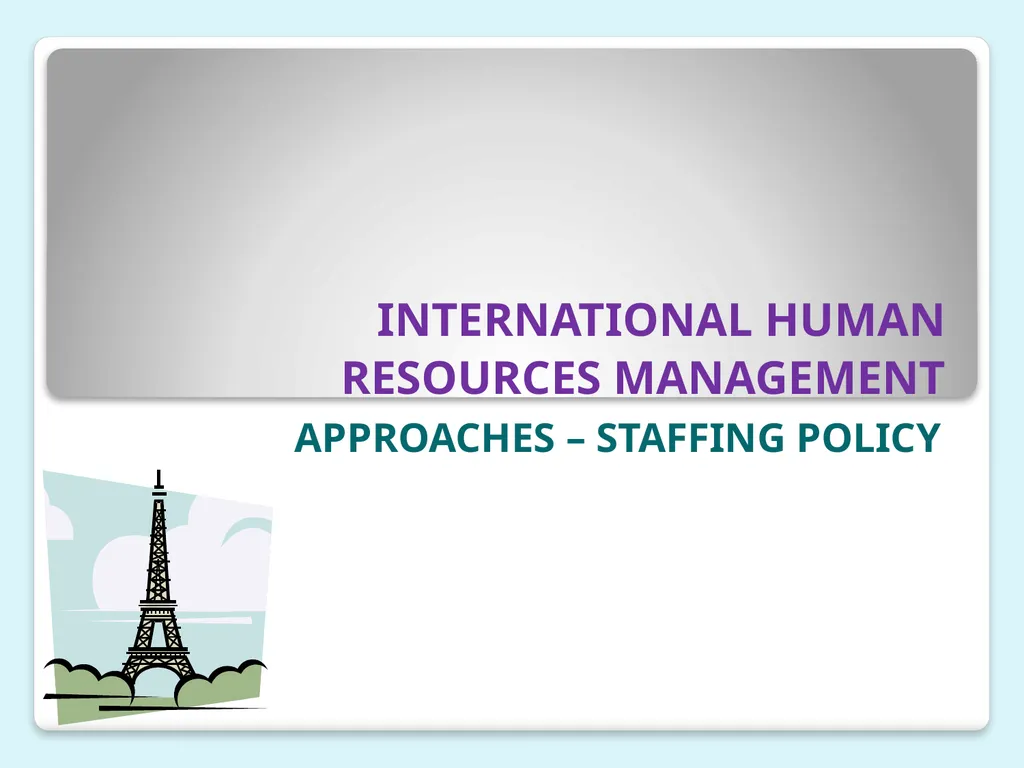
INTERNATIONAL HUMAN RESOURCES MANAGEMENT
Author: pasty-toler | Published: 2025-05-29
Description: INTERNATIONAL HUMAN RESOURCES MANAGEMENT APPROACHES STAFFING POLICY Introduction Hr manager at international level must not only select people with skills but also employees who can mix with the organisations culture. Recruitment and
Download Presentation
Download the PPT/PDF: Download
Transcript:
Loading transcript…